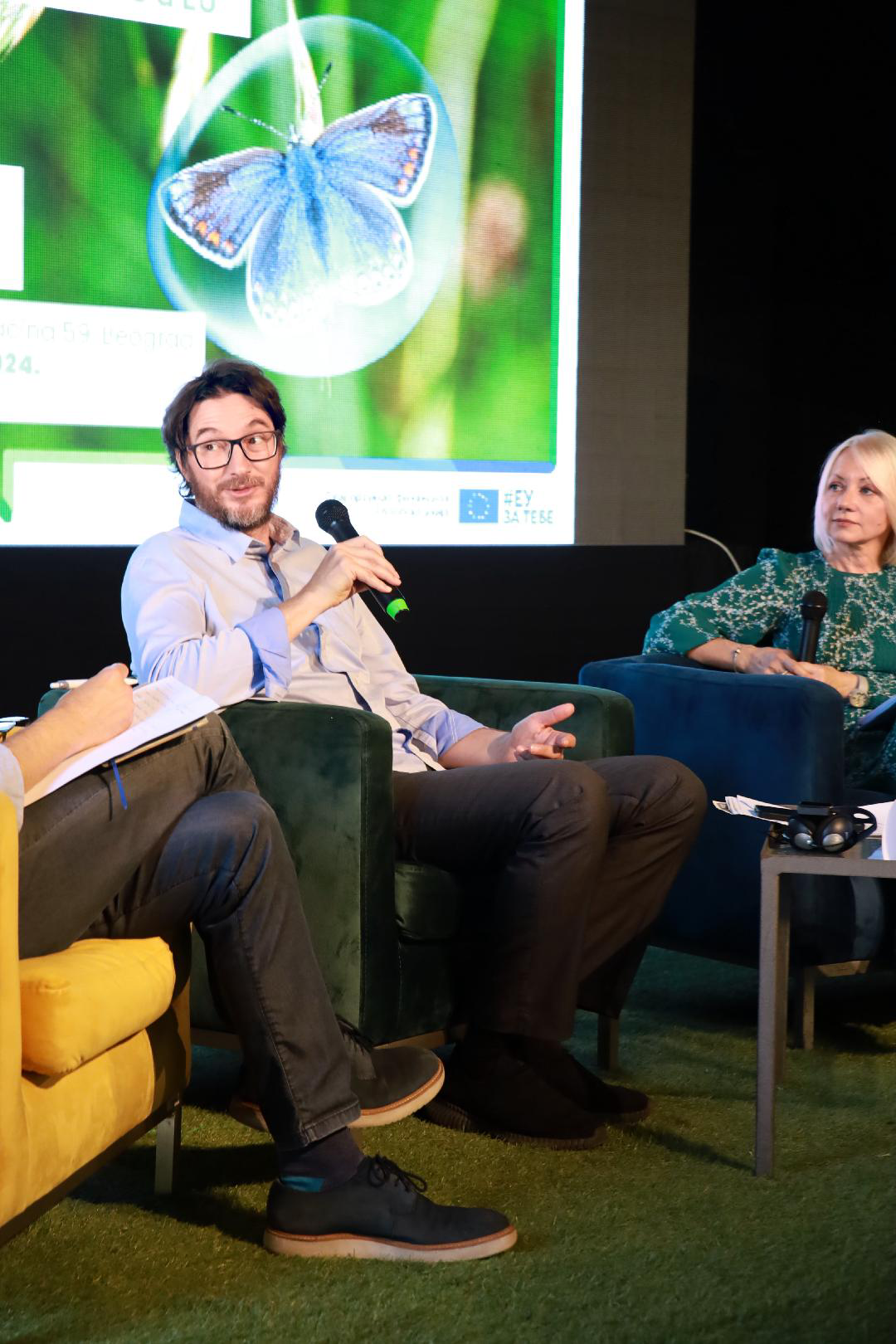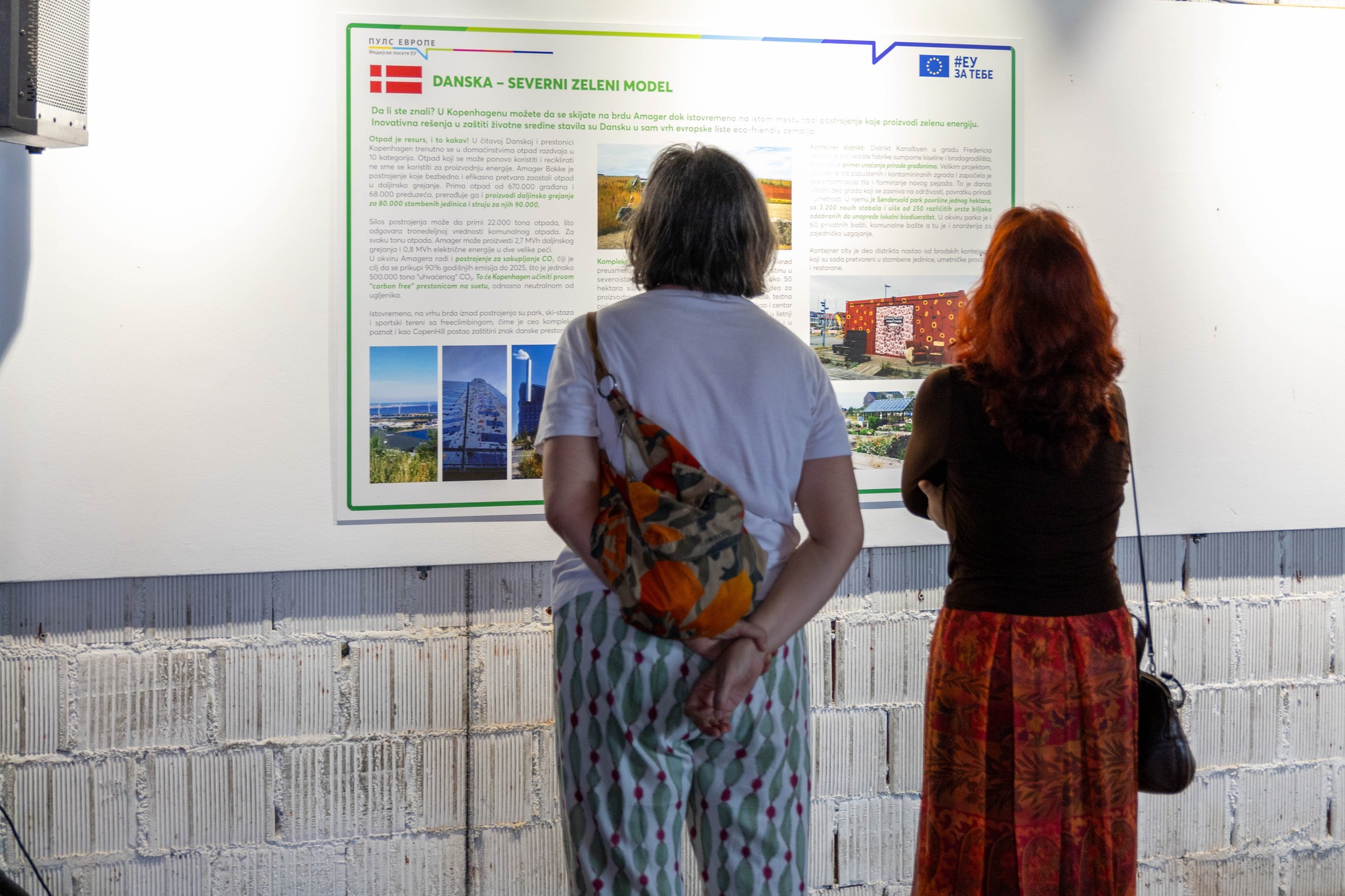As part of the celebration of the EU Green Week in Serbia, a screening of the film "Green Europe" produced by the Radio and Television of Serbia and a debate on the European and Serbian environmental protection standards were held in Belgrade on 6 June.
The event entitled "How Green is Europe" included the opening of the photo exhibition of the same name, which shows examples of best European practices in five EU countries. The event was organized by the EU Delegation in Serbia and the Pulse of Europe – Media Trips to EU project.
The film "Green Europe" is a compilation of RTS media reports on the environmental protection policies in the EU countries; reports were produced as part of media trips organised with the support of the Pulse of Europe project. The author of the film, RTS journalist Dragana Živojnović, researched environmental protection policies in Austria, Italy, Slovenia, France, the Netherlands and Germany. The 25-minute film summarizes 14 shows that have been broadcast on the RTS 2 programme.
After the screening of the film, a debate was held on European and Serbian environmental standards.
The author of the film, Dragana Živojnović, said that in the countries she visited, there were many good examples that are worth showing to viewers in Serbia since they contain suggestions on how to solve the problems in Serbia, and to the aim, as she said, that the country becomes “greener".
The programme manager of the EU Delegation in Serbia, Antoine Avignon, said that it is very good that the citizens and institutions of European countries can be seen in action through the film. "The green agenda started in Europe a hundred years ago. We put people and their well-being above institutions, but that is a political process because, in the end, we need to bring solutions that support environmental actions," he said. Avignon stated that the EU has donated more than 580 million Euros to the environmental protection sector in Serbia in the last 15 years, adding that in addition to large investment projects, it also supports smaller civic initiatives through awarding of grants managed by civil society organisations.
The Belgrade Open School (BOŠ) project manager Lazar Jovčić said that BOŠ cooperates with civil society organisations and supports them in their initiatives at the local level, but that without public policies and concrete measures there is no improvement of the environment in Serbia. He cited Sokobanja as a good example, where the new heating system that uses waste thermal water from the spa complex has a significant effect on improving air quality and that the results are visible. There are good examples of ecological practices in Serbia, the problem is that there are green regulations but they are not implemented, he added.
The editor of the magazine "Ekolist" Majda Adlešić said that the role of the media is important in efforts to protect the environment and raise citizens' awareness of ecology. "People are aware of their environment and what is happening to it, and they ask questions, and we, as the media, are here to give answers and look for solutions that we can offer," she added.
So far, 268 journalists from 36 newsrooms in Serbia have participated in the programme of media trips organised by the Pulse of Europe project; out of the 450 created and published media articles, as many as one third are from the field of environmental protection, said the team leader of the project Marina Rakić.
The exhibition "How Green is Europe" presents photos and the most important data from the environmental sector in five EU countries - Sweden, Denmark, Estonia, Portugal and the Czech Republic. The authors of the photos are journalists - participants in the media trips and members of the project team.





